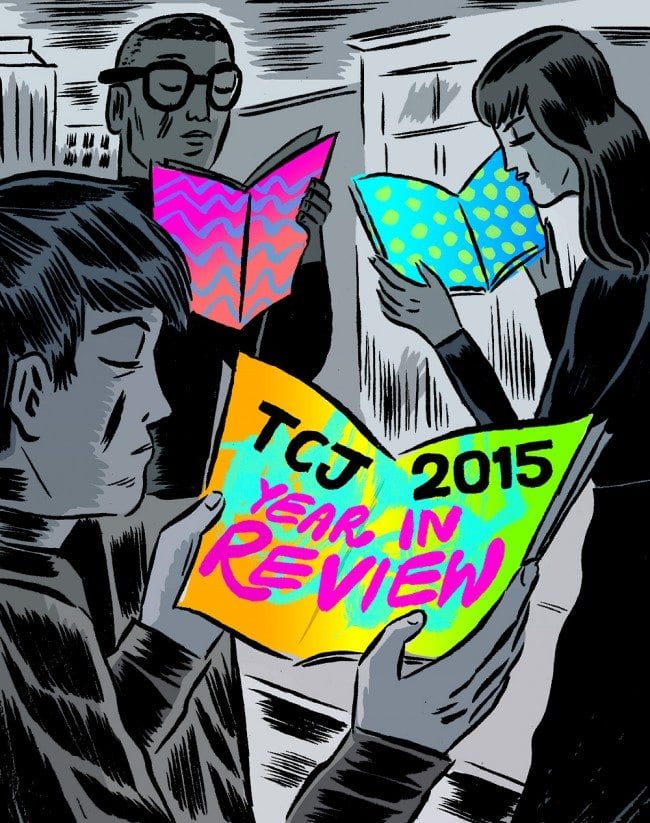Welcome back to the week. It's already February. Oh my. Here comes Paul Tumey with a look back at the (recent) history of mini-comics, which dovetails nicely with Frank Santoro's recent thoughts on the category. Paul has taken his usual deep dive and surfaced with some wonderments. Take it away, Paul:
During its roughly 45 years of existence, the modest minicomic has nurtured numerous notable creators, including: Peter Bagge, Donna Barr, Lynda Barry, Marc Bell, Chester Brown, Kevin Eastman, Brad Foster, Rick Geary, Justin Green (often credited as the inventor of the minicomic), Roberta Gregory, Bill Griffith, Matt Groening, Wayne “Wayno” Honath, Peter Laird, David Lasky, Bill Loebs, Jason Lutes, John Porcellino, Ronald M. Regé, Jr., Trina Robbins, Art Spiegelman, Colin Upton, Jim Valentino , Joe Zabel, and Dan Zettwoch, to name a few from mostly the first decades of the minicomic’s history. Some of these folks have dabbled in the form; others have made it a core part of their repertoires.
Among the minicomix of visual storytellers and outrageous gagsters like Mark Campos, Max Clotfelter, Clark Dissmeyer, Matt Feazell, Par Holman, David Miller, J. R. Williams, Steve Willis, and Jeff Zenick (to name some personal favorites of mine that aren’t – but should be – widely celebrated), one finds pockets of cloistered coolness that, once absorbed, can expand and transform ideas about comics.
Elsewhere:
The big and almost impossible to believe news this weekend was the fake prize ceremony over at Angouleme. That's right, the tone deaf organizers held an entirely fake awards ceremony, which most in attendance were convinced was entirely real. After giving out the prizes to deserving artists (like Olivier Schrauwen) it was announced it was all a gag and the real awards would now begin. Confusion, hurt feelings and really, really bad publicity ensued. Maybe time for a change in the administration, no? Otherwise, maybe the artists should just not attend Angouleme, period. Google translate over here and you'll get the picture. Most of the reaction has been on Facebook, which I've clipped and placed below:
Angoulême is abuzz again. I have endured some fairly awful Prize Ceremonies at Angoulême over my 30 plus years but last night's sounds like that absolute nadir. To declare winners, making them and their publishers elated, sparking social media tweet storms, etc, and then to announce that they are not the true ones, utterly deflating them, and go on to award someone else, is about as crass, UNamusing and low as any prize ceremony can go. No comedian with any wit would go through with this. No person in charge with any basic common sense and sensitivity would agree to this.
M. Bondoux (or 'Good Gentle' in French), festival director, explains that the idea for this 'came from the MC, Richard Gaitet. It's in the tradition of clowns like Antoine de Caunes at the Cesar film awards. Everything was very exaggerated and clearly humorous. And the comics world has a big capacity for self-parody." How has at least part of this Festival become so out of touch? Is no one daring to speak up and question these decisions? One can only assume that after the Grand Prix Fiasco, the festival's "professional" directors and PR people have decided that the only publicity worth going after is bad publicity. In all this mess some good books were awarded, thank goodness.Angouleme has officially jumped the shark. 1) they nominate no women 2) they organize a "women in comics" panel except there are no women on the panel, so they must scramble to invite some 3) and then this, the Faux Fauves, such incredibly bad taste.
This is simply unbelievable. None of the Angoulême prizes have any legitimacy at all now. The Grand Prix was inexcusable ignorance but this is deliberate cruelty. Shameful.
Update: The actual jury of the actual Fauve prize has issued a statement:
We, the members of the Grand Jury for this year’s Angoulême International Comics Festival, had an amiable meeting during which we chose the winners of the “fauves” in perfect harmony. We were surprised to be left out of the awards ceremony and then alarmed to hear the MC, whom we’ve never met, claim that we’d gone through contentious deliberations. By the end we were stupefied by the cruelty and vulgarity of the ceremony as a whole. The announcement of fake awards, which broke the hearts of numerous authors, publishers, and readers, in addition to the sexist and off-color remarks of the MC are beneath the dignity of a festival that remains an internationally respected flagship event in the world of comics. We are happy to have had the chance to make a contribution by awarding radical, unique works that will mark the history of the Ninth Art.
Antonin Baudry
Laurent Binet
Nicole Brenez
Philippe Collin
Véronique Giuge
Hamé
Matt Madden
Not much can top that... but I would like to congratulate the great Ken Parille on 15 years of his indispensable Daniel Clowes Bibliography. He reflects a bit here.































